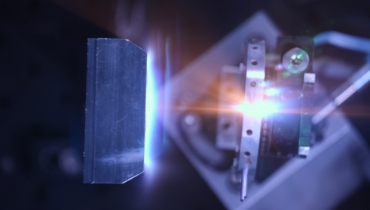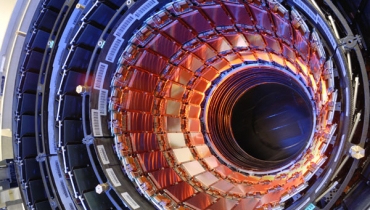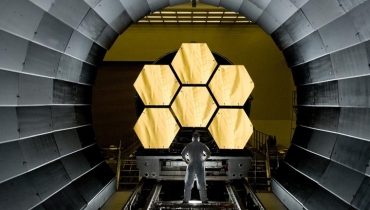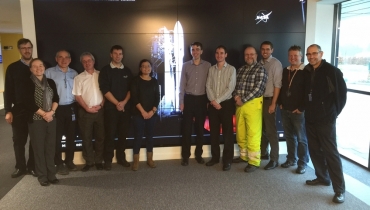- Who's Behind EYU
- Contact
- Search

Cutting-edge research is happening all the time, right across the UK. The Science and Technology Facilities Council (STFC) has thousands of researchers working towards answering some of our biggest questions: What are we made of? Where did we come from? Is there life on other planets, and how can we make life better on this planet?
Find out more about some of STFC’s ongoing projects below.

In science fiction, lasers are nearly always portrayed as a weapon of destruction, used to destroy space ships and win battles. In the real world, lasers are powerful research tools that can be used to investigate lots of questions, from understanding cancer cells to helping unlock the potential of fusion energy. Far from being a destructive force, lasers are used to correct people’s eyesight, remove tattoos and operate CD players.
STFC’s Central Laser Facility at the Rutherford Appleton Laboratory is one of the world’s leading laser facilities. Research at this facility helps us understand more about our environment, diagnose and treat diseases, produce potential new energy sources and even prevent terrorism. Lasers can even be used in art history to identify the chemical composition of pigments in paint, and in archaeology to analyse the bones of sailors who sailed on the Mary Rose.

STFC leads the way in delving deep into the world around us, and in the case of the Large Hadron Collider (LHC), this is literal as well as metaphorical! Built 100m beneath the countryside of Geneva in Switzerland, the LHC is the world’s largest and most powerful particle accelerator. This 27km ring of superconducting magnets accelerates two beams of particles until they almost reach the speed of light, before smashing them together with incredible force. These collisions break the particles up into their smallest parts, and give us an amazing insight into the building blocks of the world around us.
But did you know that this exciting science is also happening much closer to home? There are particle accelerators at the Rutherford Appleton Laboratory in Oxford, and the Daresbury Laboratory in Warrington. These accelerators are assisting in solving some of the major challenges of the modern world, including developing more effective drugs and designing more efficient solar cells.

The James Webb Space Telescope (JWST) is the world’s largest ever space telescope, and is due to launch into space in 2018. It will travel approximately 930,000 miles (1,500,000 km) beyond the earth, and will spend between 5 and 10 years searching for distant objects that we cannot see from down on Earth. It is hoped that the JWST will help us to understand the formation of galaxies, stars and planets, and give us a much clearer view of planets outside our solar system.
At the UK Astronomy Technology Centre, based at the Royal Observatory Edinburgh, STFC scientists are designing and developing one of the instruments that will be attached to the JWST and launched with it into space. MIRI (Mid InfraRed Instrument) is an infrared camera and spectrometer that will detect light being emitted from far away objects in space. This will give us a better understanding than we’ve ever had before of our universe, and how it was formed.

November 22 2016
STFC RAL Space are celebrating the successful launch of a next generation geostationary weather satellite that will provide more accurate forecasts and warnings of major space weather events.
The Geostationary Operational Environmental Satellite-R Series (GOES-R) was launched from Cape Canaveral at 23:42 on 19th November. The satellite contains a solar telescope that was part built by the team at RAL Space in Oxfordshire.
There are six primary instruments on board GOES-R, one of these instruments, the Solar Ultraviolet Imager (SUVI) is a telescope that monitors the sun in the extreme ultraviolet wavelength range. STFC RAL Space provided the camera electronics on SUVI, working closely with e2v technologies ltd who provided the detectors. Lockheed Martin were the lead on SUVI and worked with RAL Space for 7 years to bring the project to fruition.